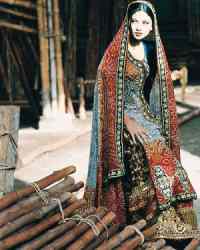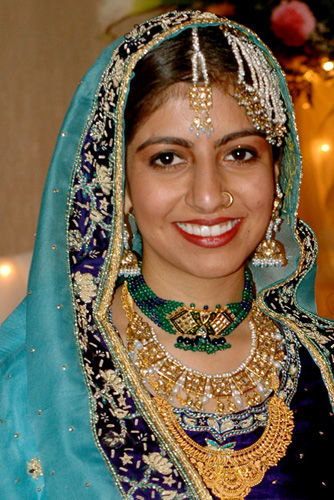



Formed on
The PAF has nine m
ain operating bases that are fully functional in bot
h peace and wartime.
These are supplemented by eleven forward bases
which become fully operational in time of war, nine f
orward attack bare bases while the 211-mile (340km
) long M-2 motorway
has dispersal strips in the Swedish Air Force fa
shion.
The PAF has some 2
2 combat squadrons,
six squadrons flying Aerospatiale Alouette
IIIs on search and rescue/liaison duties
and a composite air
transport wing. Pakistan Naval Aviation looks after maritime air operations with Lock
heed martin P-3C Orions, Breguet Atlantics, Fo
kker F-27s, Westland Sea King Mk45s, Westland Lyn
x HAS3 and Alouette
IIIs. Pakistan Army A
viation Corps flies a m
ixture of fixed and rotary wing aircraft in close supp
ort of ground operations. Its main firepower is pro
vided by Bell AH-1s Cobras.
beginning with two fighter and one transport Squadrons, a negligible infrastructure, non-existent comman
d structure, and almost nil maintenance facilities.
All it had was the cour
age and determination of a handful of its personn
el, who left no stone unturned, in shaping PAF into th
e Air Force of today.
The modernization programme taken up by PAF in 19
52 paid dividends in t
imes to come. In a phased programme, the ‘
’, ‘Dakota’ and ‘Fury’ aircraft were progressively re
tired. With American, French and Chinese acquisitions, the PAF started flying F-86s, B-57s, F-104 Starfighters, F-
6s and Mirages. This modernization programme started with the induction of F-86 Sabre, which cha
nged the whole system of training, maintenanc
e and operations. Air
Power, was thus a major player in 1965 war, where th
e role played by both rival Air Forces, directly influe
nced outcome of the conflict. Particularly for the P
AF, 1965 war brought out its fighting spirit, and implanted a culture of devotion and sacrifice.
Six years later, PAF once again met the call of duty for defence of the motherland. During 1971, separation of
PAF TODAY
For their help in the anti-terrorism activities the
Another new type is the FC-1/JF-17 Thunder. The aircraft was developed by a joint venture between CAC and Pakistani Aeronautical Complex (PAC). PAF hopes to acquire 150 aircraft of this type to replace a large number of the Mirages and older F-7s. The first two aircraft of 16 currenly on order for
Four T-37Cs are forming the aerobatic team the Sherdils (Urdu for "lionhearted"). In the coming years the 20 T-37C aircraft will be replaced by the new K-8 Karakorum. The first K-8s have been operating at the Evaluation Flight at PAF Academy Risalpur since the mid-ninetees but additional aircraft (6 + 22) have recently been ordered. The Primary Flying Training Wing (
In 2006 the country placed an order for Swedish Saab 2000 aircraft equiped with the Erieye-system. This type will eventualy give the PAF the AWACS-capacity it was looking for.
The PAF saw the arrival of Mi-17 transport helicopters and appears to operate a number of
The PAF has never had things easy. For nearly 60 years it has had to safeguard national airspace and deter as much more powerful India, a task made all the more arduous by the recent embargo on acquiring the latest technology. The PAF coped by co-operating with
Close assistance in the global war on terror has allowed the PAF to become adept to anti-insurgent operations around the Afghan border and it has learned to deliver air-weapons with decisive effect. More modern airframes are entering service but the PAF required surveillance UAVs and precision-guided munitions to attack militant hide-outs while avoiding collateral damage. Efforts to upgrade the
Simultaneous acquisition of complex system requires significant financial and human resources. In addition, the assimilation and efficient utilization of high technology will pose a huge challenge. That said, the PAF has a lot going for it. Foreign military observers attending High mark 2005 were impressed with the professionalism of both PAF air crews and ground personnel. Ability is rewarded and at least two females are going through flying training. However, the PAF hierarchy knows that a huge efforts will be required to upgrade training systems and syllable to prepare their personnel for the future.
The Indian Air Force has its weakness. It lacks the infrastructure to support all its air efforts, especially in the southern sector. There are gaps in its low level radar coverage, its spread of Russian and Western aircraft makes for a logistic nightmare and the unreliability of many of its MiGs has led to an appalling rate of flying accidents. That said, the arrival of BAE Systems Hawk trainers will revolutionize the IAF flying training system and Washington has balance its military sales to Pakistan by allowing Lockheed Martin and Boeing to offer the F-16 Fighting Falcon and F/A-18 Hornet as candidates for the IAF’s multi-role programme. The Bush administration has also stated that it will support Indian requests for other ‘transformative system in areas such as command and control, early warning and missile defense’. This means that even when new F-16s arrive in PAF service there may still be the same relative capability gap with
In summary, the PAF may not have enough state-of-the-art equipment but for its budget and the size of its organization, it is an operationally ready and professional air force. It is on the verge of a major acquisition programme, but funding will be an abiding concern, compounded by high oil prices and the costs of the

The
owned name in the educational circles of
n
holding PhD degrees from renowned institutions of
Located in the historical and culturally alive city of
of the academic activities. On account of its quality degrees, pleasant environment and low tuition fees the University remains the institution of first choice for admission seeking students.
Allama Iqbal Campus, named after the great South Asian thinker and mystic poet, with Islamic architectural design is in the middle of the bustling city of
Quaid-i-Azam Campus, after the name
of the father of the Nation, is located 12 kilometers to the South of Allama Iqbal Campus. Spread over an area of 1800 acres of lush green landscape, this campus is the centre of academic and administrative activities of the University. A canal dividing the academic blocks from the student lodgings and adds to the beauty of the campus.
The University has also a summer campus at Khanaspur, located at a height of about 7,000 ft. in the Himalayan range near Ayubia. This Campus, in addition to providing research facilities, is also used as a recreational centre for the faculty and the students.
The University has also started Campus at
The University comprises of 4 Campuses, 13 Faculties, 9 constituent colleges, over 63 Departments, Centres, Institutes, and 500+ affiliated colleges. It has over 620 permanent faculty members involved in teaching/research and over 30,000 on campus students. Annually there are about 350 exams for 450,000 studen
ts.
KARACHI UNIVERSITY
established
through the parliament
as a
However, through
another act of the parliament in 1962 its
status was redefined as
university
of the
t
was passed and after an amendment in 1951 it w
as enacted and Prof A.B.A
Haleem was appointed
as its first Vice Chancellor. For the first
two years,
the
affiliated colleges. In the year 1953 it started its teaching and research
activities at two Faculties of Arts and Science. Opened with an initial
intake of 50 students, the university is now a sprawling structure of 53
Departments and 20 world class and highly reputable Research Centers
and Institutes, under eight faculties of Arts, science Islamic Studies
Pharmacy Commerce & Business Administration, Law, Education and
Medicine. At present the enrolment of a regular student at the Campus
is slightly over 24,000. There are about 700 teachers and more than
2500 supporting staff.
The University in the beginning was housed in small buildings was housed
in small buildings adjacent to the
expansion, it began to be felt that the space in which the university was
functioning was not enough for its needs.
Moreover the atmosphere of the congested and polluted area was not
conducive to higher education and research. Thus a plot a of a1279
acres of land was acquired on the
Road). On
campus. Thus began a new phase in the life of the university. The
day is still commemorated by various old students’ Association and
the University administration jointly.
educationists and scholars associated with this institution of higher
learning like, Dr. I. H. Qureshi, Dr. Mahmud Hussain, Dr. Salemuzzaman
Siddiqui, Dr. Afzal Hussain Qadri, Dr. M. M. Ahmed , Dr Mujtaba Karim,
Prof. M. Ilyas, Prof. Q. Fareed, Dr. Ibadur Rehman Khan, Prof Muntakhib
ul Haq, Prof. Memony, Dr. S. M. Yousuf, Dr. M.A Wali, Dr. Karawala.
The faculty was drawn not only from
educationists form

LANGUAGEs IN PAKISTAN
URDU is the only official language of Pakistan. Although English is generally used instead of Urdu in this regard. English is the lingua franca of the Pakistani elite and most of the government ministries.
Urdu is closely related to Hindi but is written in an extended Arabic alphabet rather than in Devanagari. Urdu also has more loans from Arabic and Persian than Hindi has.
Many other languages are spoken in Pakistan, including PANJABI , Siraiki, Sindhi, Pashtu, Balochi, Hindko, Brahui, Burushaski, Balti, Khawar, Gujrati and other languages with smaller numbers of speakers.

 The bridal dresses are incomplete without heavily ornate jewellery, studded with precious and semi-precious stones. The unique beauty of the jewellery of Pakistan reflects the cultural traditions and diversity of the people. Centuries of tradition are artistically and lovingly moulded in each hand-crafted piece of gold, silver and other metallic and non-metallic materials.
The bridal dresses are incomplete without heavily ornate jewellery, studded with precious and semi-precious stones. The unique beauty of the jewellery of Pakistan reflects the cultural traditions and diversity of the people. Centuries of tradition are artistically and lovingly moulded in each hand-crafted piece of gold, silver and other metallic and non-metallic materials.





Dresses of each country generally correspond to the local climate, aspirations, traditions, culture and religion. Then there is a blend of traditional dresses and modern wear to keep step with changing times.
The general casual attire of Pakistan and Hindustan is somewhat different from all dresses worn around the world, specially in the region. Due to extreme climatic conditions, the wearing of loosely fitted shirts ("Kameez") and trousers ("Shalwar") is very common both for women and men. Besides, "Dhoti", a large piece of unstitched cloth worn around the waist till the ankles is also worn in villages generally by men and occasionally by women in Punjab and Sind. While Shalwar is the most common dress besides Kameez in the frontier region and Balochistan. Owing to the peculiar requirements of the religion of Islam,
wherein women are not supposed to expose their body, an unstitched piece of cloth is worn over the shirt, covering the head and upper body, known as "Chaddar". Men also wear Chaddar during winters to protect themselves from severity of the weather. However, women in rural areas also wear a over head dress, called "Burqa" to cover their entire body. Wearing of headdress is a sign of nobility in the Punjab and Sind, while it is a rather must in the frontier region and Balochistan.